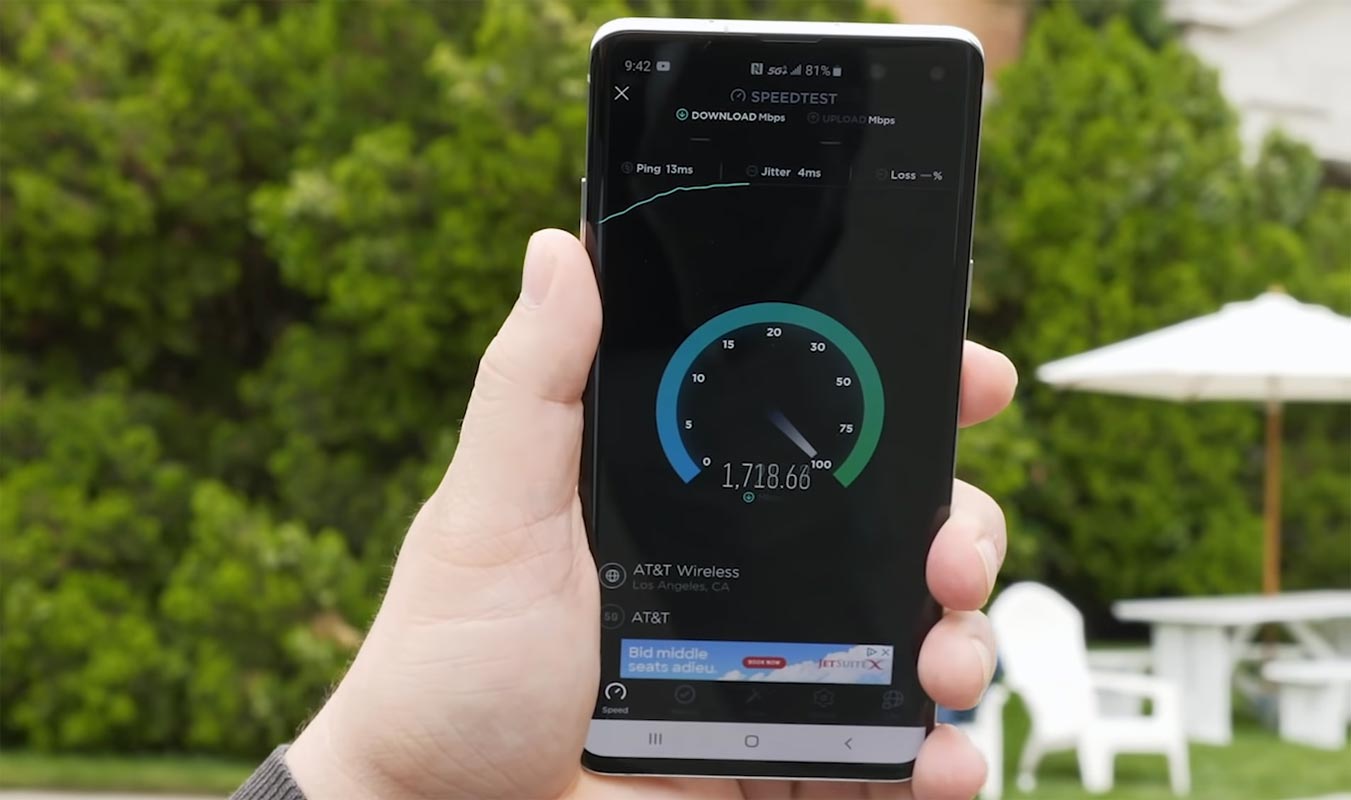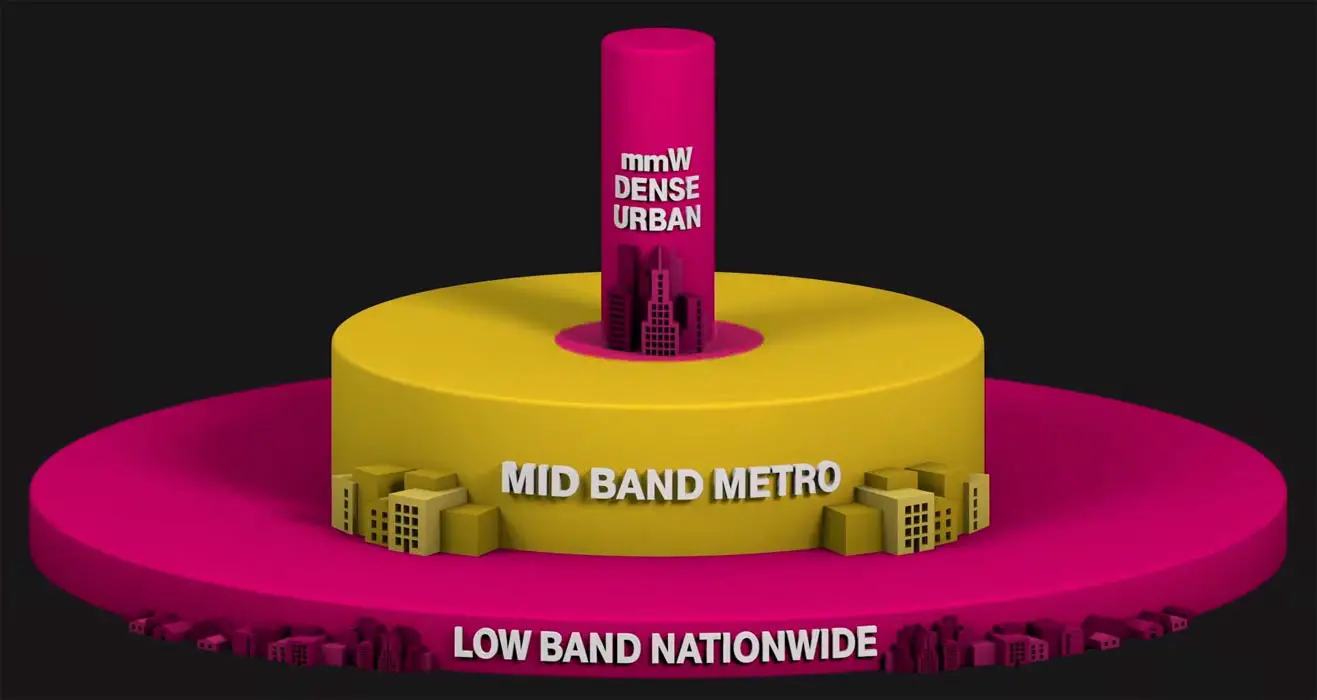The real 5G from AT&T is here. It is not 5Ge. Yes, when every mobile operator rolled our real 5G and working hard to go to the next step. AT&T, on the other hand, changed its LTE logo into 5Ge and said it is 5G experience. In the beginning, every carrier followed a problematic step to provide 5G, and it covers only blocks. They said the process is complicated and takes a long time. But after T-Mobile achieved 5G across the United States covering more than 50+ states with its low-band coverage, Now everyone following the same method. Thus, users who are in other carriers like AT&T and Verizon Wireless are getting 5G. After the successful initial launch, now AT&T Expands its 5G to 28 more cities.
AT&T Expands its 5G to 28 more cities in 14 states
AT&T rolled out its first 5G service in 2018 in selected cities of the USA. Later in April 2020, AT&T expanded its 5G coverage to 190 cities and towns. With the increasing need and demand of customers, the company kept on growing, and on 29th June 2020, it included 28 more cities in its coverage areas. Now AT&T has become one of the biggest 5G service providers in 355 markets of the USA to 179 million peoples. Among these 355 markets, around 35 towns and cities are enjoying the true 5G, which is known as 5G+. AT&T officially released the details about the expansion in their blog.

Cities included in the latest announcement
You are lucky to get the full 5G coverage of AT&T if you are living in the following 5G cities.
- Arkansas (Ouachita County)
- Florida (Melbourne, Miami, Orlando, and West Palm Beach)
- Hawaii (Maui County)
- Idaho (Idaho County)
- Illinois (Alton-Granite City)
- Michigan (Jackson)
- Missouri (Columbia)
- Minnesota (Chippewa County)
- North Dakota/Minnesota (Fargo-Moorhead)
- Oregon (Eugene-Springfield)
- Pennsylvania (Crawford County)
- Puerto Rico (Aguadilla, Aibonito Municipality, Arecibo, Mayaguez, Ponce, Rincon Municipality, and San Juan)
- Tennessee (Lake County)
- Texas (Austin, Dallas, Navarro County, Victoria, and Wilson County)
- Utah (Salt Lake City)
What is a low band and Mid-band 5G?
The fifth generation of cellular technology is named as 5G, promising an ultra-high-speed, coverage, and network responsiveness. 5G is 10 to 100 times faster than a typical mobile system, even faster than the fiber optics installed in your home. Verizon is now offering 5G home as a replacement for wired fiber technology, which uses a 5G signal. The true 5G uses mmWave (millimeter wave), which is shorter in wavelength but gives you ultra-high-speed around 1.5 Gbps.
Verizon Wireless is using mmWave and has an average speed of 506.1Mbps. A smaller wavelength, mmWave, doesn’t cover the extended areas, so the connectivity on mmWave is just 1%. AT&T is using the 850MHz spectrum, which gives an average speed of 62.7Mbps. This wavelength causes the connectivity of AT&T to be 19.8%.

Low band 5G
Networks like T-Mobile, currently using 600MHz “Low Band” 5G network technology. Since this is not high band 5G, it isn’t as fast as expected of a 5G network; But, It will give better speeds compare with LTE and will provide you with a 5G logo. T-Mobile used this plan, and it now covers all 50 states in the United States with its 5G.
Mid-band 5G
In mid-band, 5G carriers will use 2.5Ghz frequency compare with the UW band. Compare with Verzion UW 5G; People thought the mid-band would give less speed. But, recently, T-Mobile achieved 1Gbps speed using the mid-band 5G. So, The coverage and real-time usage is a success compared with the lab data.
Is it just about speed?
Not only the speed but the low latency is the key benefit of the 5G spectrum. Latency is the response time between when you click a link on your phone, and the network delivers it. The latency time on a typical cellular network is 20 milliseconds, while on 5G, it is merely one millisecond, just like the flash of your camera. It doesn’t seem any different, but it is critical when a surgeon in Boston is operating a patient on a video link using the robotic knife in New York. Also, very essential for self-driving cars while communicating with each other in real-time, running on roads.
How fast is AT&T 5G right now?
Despite the promising speed of hundreds of megabits and gigabits, most of the 5G network providers didn’t offer such incredible speed yet. The average rate of 4G is 32.7 Mbps, announced by OpenSignal in May 2020. The average speed of the AT&T 5G network is 62.7Mbps, which is slightly higher than the lowest 47Mbps of T-Mobile. The max speed among these 5G carries is 506.1Mbps from Verizon. AT&T 5G is an upgraded version of 4G Lite. That is why AT&T introduced DSS (dynamic spectrum sharing) to operate both 4G and 5G from the same channels.
What is DSS (Dynamic spectrum sharing)?
DSS is an effortless and cost-effective way to use a 5G network on the same 4G channels. DSS gives the facility to use the same spectrum of 4G for 5G, depending upon the customer’s demands to assist it in real-time. AT&T uses this DSS technology to update its 5G coverage to most of the locations quickly, within those resources. That is why the currently announced 5G is not an essential update for customers. Much of the AT&T network is not real 5G but an update of 4G LTE, with a compromising speed of average 62.7Mbps.
AT&T next 5G plans
As most of the AT&T network is operating on 850 MHz, so you get meager speed as compared to other operators. AT&T is planning to expand its low spectrum mmWave to most cities in this summer. After the successful coverage throughout the country, they may move the urban and metro city coverage to Ultra Wideband like Verizon Wireless.
Wrap up
T-Mobile 5G is more user-friendly. You can get 5G experience when you have compatible mobiles. But to access the Verizon UW band, You need exclusive mmWave antenna mobiles. OnePlus and Samsung have to add this separate antenna to its mobiles. That’s why Samsung released unique S20 UW 5G series for Verizon. AT&T following T-Mobile way. So, You can experience the same way—Ultra Speed in Urban cities and better 4G speed in all other places.
High price 5G experience will be gone soon. It will be available cheaply in the future. With the help of the Snapdragon 690 processor budget, mobiles can access 5G. So, The users will increase. AT&T rolled out real 5G instead of the 5Ge logo. The number of USA markets having 5G network has expanded to 135 cities after AT&T added 28 more locations to it. To enjoy such an incredible 5G network and speed, you must reside in either of these cities. As the need grows, AT&T has expanded its coverage area, do you think this step was much needed? Let us know via comments.

Selva Ganesh is the Chief Editor of this Blog. He is a Computer Science Engineer, An experienced Android Developer, Professional Blogger with 8+ years in the field. He completed courses about Google News Initiative. He runs Android Infotech which offers Problem Solving Articles around the globe.



Leave a Reply